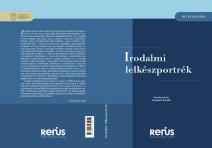The Clergy Characters in Magda Szabó’s Novel Fresco
Synopsis
It was out of personal interest that I chose as the topic of my paper a piece of Hungarian literature that prominently features Protestant clergy depictions. I perceive the examination of literary clergy portraits as an interdisciplinary field at the intersection of literature and theology where my theological knowledge can serve as an aid and offer new perspectives.
The story of the novel spans thirteen hours in a day of a clergy family, but through the internal monologues of the characters, we also learn about family events from years or decades earlier, including cataclysms. The setting is in 1954. The geographical location is not identifiable due to the narrative method of blurring specifics. The broader location is Eastern Hungary, and the narrower setting is the parsonage of the Reformed Church in a small town on the Great Plain. The same applies to the characters. Although we encounter the surnames of well-known and influential Aaronite families in the story, no real persons can be identified in the characters. The ominous day is that of the funeral of the wife of the retired pastor (who suffers from severe psychiatric illness). Unusually, no one in this family mourns; instead, everyone tensely awaits a reunion, the
return of the younger daughter who fled nine years ago. Some attribute almost fateful significance to her and the event of the reunion.
Two Reformed pastors live in the family. The extreme, overstrained puritanism of the elderly father, father-in-law has inherently rendered the family community cold, distant and unloving. The young active pastor is the country’s first “peace priest”, who, in addition to his service in the church, is also an officer of the City Council. Their incompatibility and toxic relationship further damage the family atmosphere. Other clergy figures appear in the story, such as a bishop, who is obviously a man of power, and the funeral preacher, who authentically illustrates the fears of the era’s people (clergy) with his own fears and compulsion to conform. All characters are historically credible.
The novel’s message can be articulated in several relations. If we see the story of an intellectual family living in an urban environment, we primarily focus on multiply wounded and unhappy human lives spent in flawed, often failing and abusive relationships and our personal attitudes towards them. If we consider it relevant that this is not the story of a teacher or doctor family but a clergy family, we must also include additional ecclesiastical and theological interpretation possibilities. Knowing Magda Szabó’s oeuvre, I find the latter relation legitimate. In this case, the flawed, failing, abusive, wounded and unhappy people are clergy whose lives do not harmonize with biblical norms and the messages of their own sermons.
It was out of personal interest that I chose as the topic of my paper a piece of Hungarian literature that prominently features Protestant clergy depictions. I perceive the examination of literary clergy portraits as an interdisciplinary field at the intersection of literature and theology where my theological knowledge can serve as an aid and offer new perspectives.
The story of the novel spans thirteen hours in a day of a clergy family, but through the internal monologues of the characters, we also learn about family events from years or decades earlier, including cataclysms. The setting is in 1954. The geographical location is not identifiable due to the narrative method of blurring specifics. The broader location is Eastern Hungary, and the narrower setting is the parsonage of the Reformed Church in a small town on the Great Plain. The same applies to the characters. Although we encounter the surnames of well-known and influential Aaronite families in the story, no real persons can be identified in the characters. The ominous day is that of the funeral of the wife of the retired pastor (who suffers from severe psychiatric illness). Unusually, no one in this family mourns; instead, everyone tensely awaits a reunion, the return of the younger daughter who fled nine years ago. Some attribute almost fateful significance to her and the event of the reunion.
Two Reformed pastors live in the family. The extreme, overstrained puritanism of the elderly father, father-in-law has inherently rendered the family community cold, distant and unloving. The young active pastor is the country’s first “peace priest”, who, in addition to his service in the church, is also an officer of the City Council. Their incompatibility and toxic relationship further damage the family atmosphere. Other clergy figures appear in the story, such as a bishop, who is obviously a man of power, and the funeral preacher, who authentically illustrates the fears of the era’s people (clergy) with his own fears and compulsion to conform. All characters are historically credible.
The novel’s message can be articulated in several relations. If we see the story of an intellectual family living in an urban environment, we primarily focus on multiply wounded and unhappy human lives spent in flawed, often failing and abusive relationships and our personal attitudes towards them. If we consider it relevant that this is not the story of a teacher or doctor family but a clergy family, we must also include additional ecclesiastical and theological interpretation possibilities. Knowing Magda Szabó’s oeuvre, I find the latter relation legitimate. In this case, the flawed, failing, abusive, wounded and unhappy people are clergy whose lives do not harmonize with biblical norms and the messages of their own sermons.






